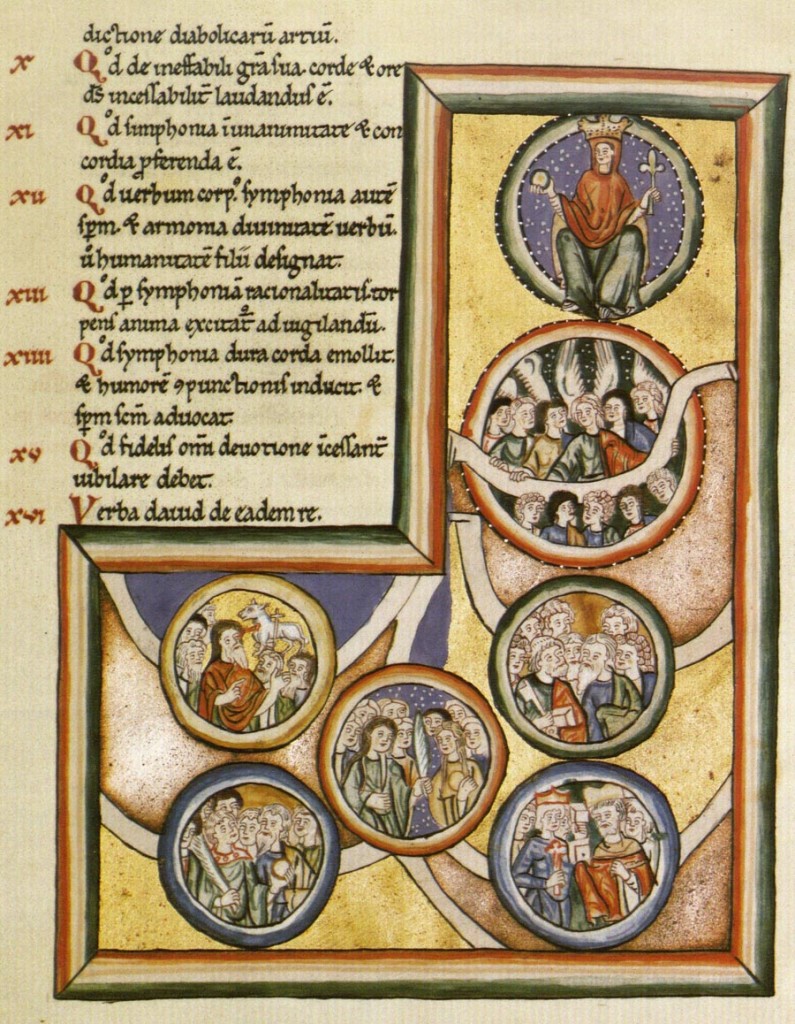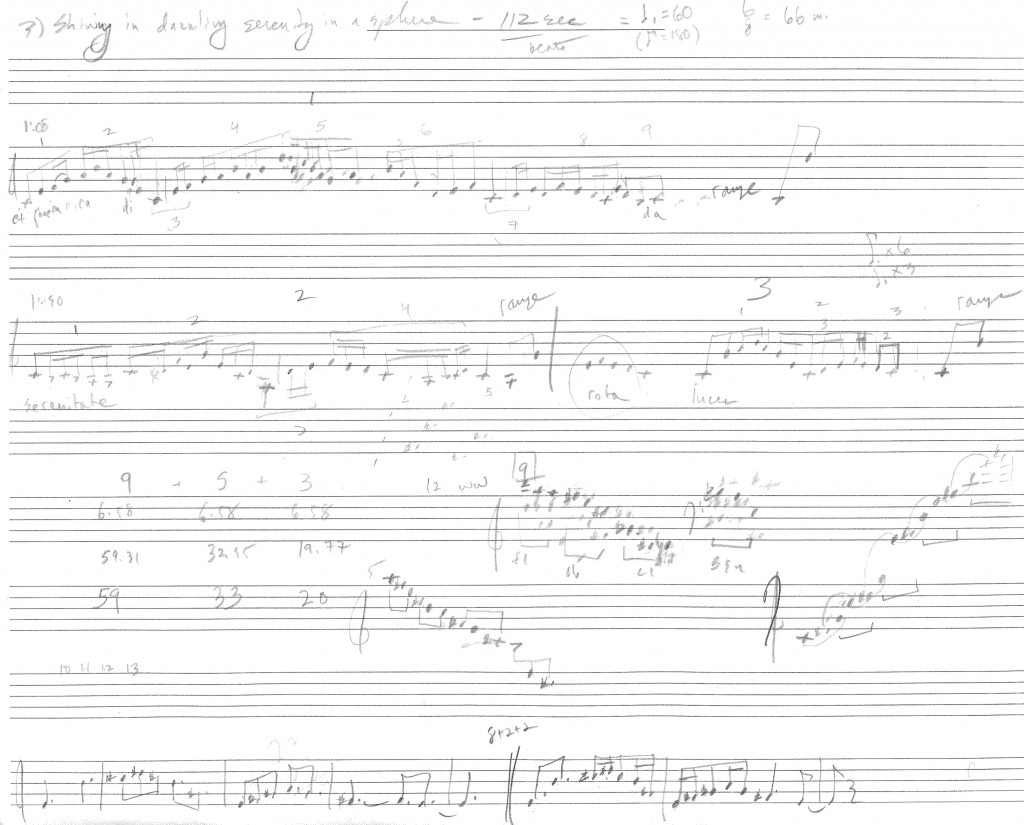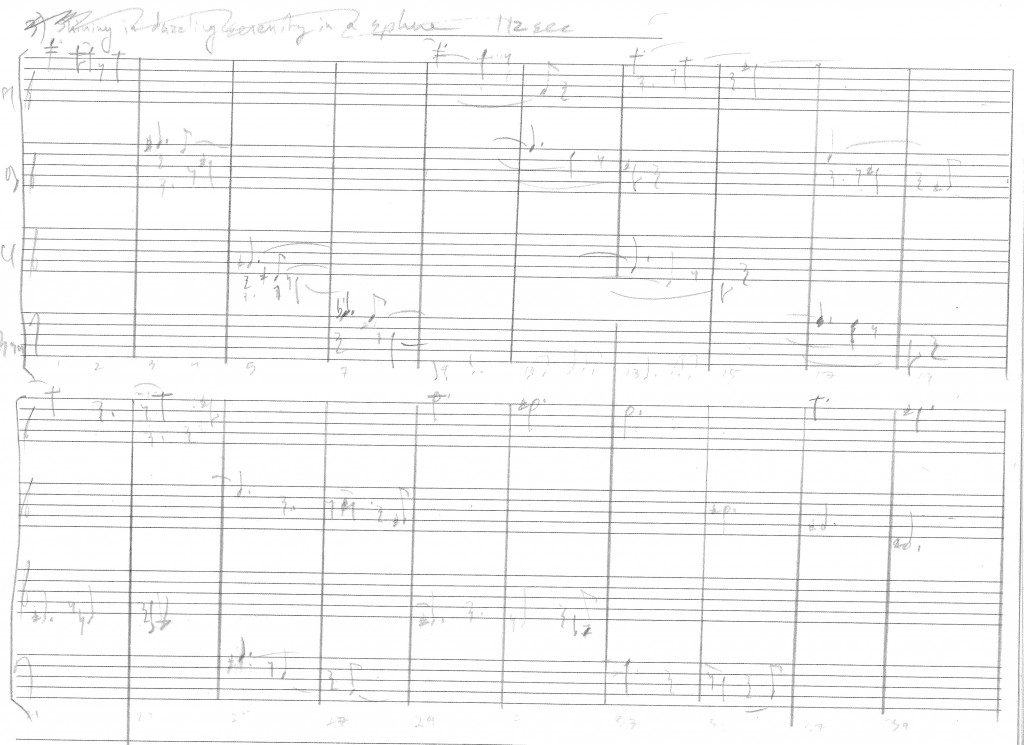“Shining in dazzling serenity in a sphere”
The third line in Hildegard’s poem contains one of the key images of her visionary theology—the “dazzling sphere.” From an early age, Hildegard experienced ecstatic visions of beauty that developed and changed over her lifetime. An early vision, apparently, was one where she saw luminescent spheres gently floating around her.
For this section of the composition, I have taken melodic figures directly from the chant and incorporated them into the music you’ll hear from the woodwind section. Woodwinds are often used by composers to evoke the natural world, as they are modern descendants of the earliest instruments known to humankind and were made from bone and wood. My process was simply to transcribe the pitches from Hildegard’s chant into modern notation and then apply my own rhythms to them. Several such transcriptions appear on this page from my sketchbook:
On the page below, I’ve sketched the beginning of each entrance of the woodwinds (4 lines, one each for the 3 flutes / 3 oboes / 3 clarinets / 3 bassoons). What will result is a massive series of canons starting at different pitches, which I hope will sound dazzling! Gradually, the melodic lines droop lower and lower, as if these spheres are gently floating from the sky to the ground. In a way, this kind of counterpoint is reminiscent of both 15th century music (such as Tallis’ massive “Spem in Alium”) as well as Ligeti’s “micropolyphony.” A slightly more luminescent kind of polyphony exists in some music by Morton Feldman (“Coptic Light”), which is also never far from my mind.




Leave a Reply